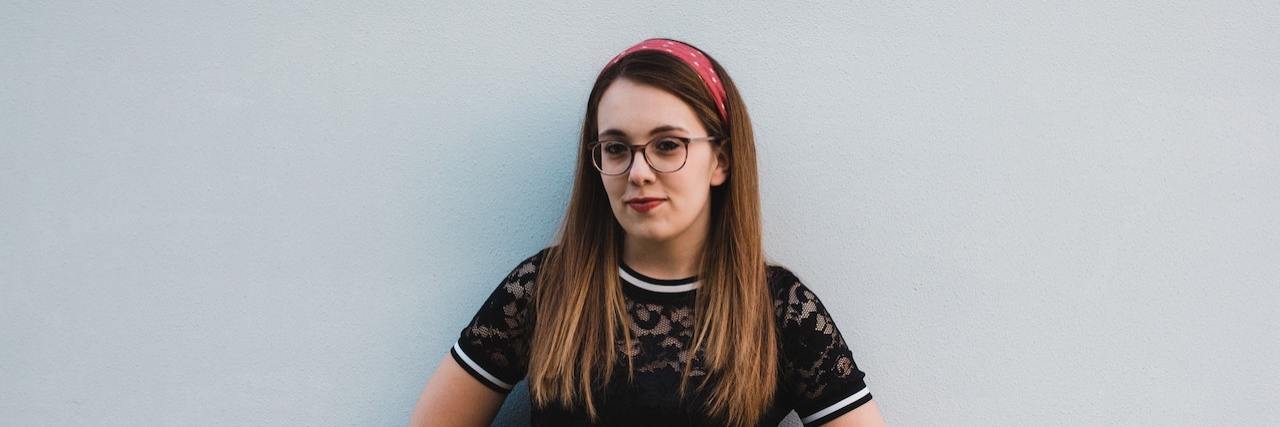5 Points to Consider When Identifying Self-Harm
When I was 16, I remember being alone in my room, desperate for a way to release my frustration. It was a weekday afternoon, after school. I looked around the corner from my bedroom to make sure my parents weren’t around, then I started to hit my head on the wall.
One time in ballet class, we were at the barre doing plies. I had a rubber band on my wrist to snap harshly against my skin. I also dug my nails into my arm when my teacher wasn’t looking.
I knew these were acts of self-harm, and they were not conducive to my health, but that wasn’t going to stop me. I still feel this way from time to time. It will flare up for a little while, then disappear for several months. I knew exactly what I was doing to myself, but I did not fully understand why. I just really wanted to do it.
Eight years later, at age 24, I finally found my answer. Self-harm is my punishment to myself for feeling frustration and anger. Coming from someone who experiences very strong mood shifts with bipolar disorder, it can be discouraging when I take a few steps back in my progress after experiencing a “good streak” of mood. That is when I start to mistreat myself and my body.
Self-harm looks different for everyone, and can be triggered by a multitude of feelings or situations. I have listed and elaborated on some major points to consider when identifying self-harm, for both the harmer and the witnesser.
1. Self-harm is not selfish.
In the past I have heard others mention how they see self-harm and suicide as selfish acts. Their argument being that the victims do not realize how their decisions burden their family and friends, and they are only thinking of themselves when performing the action.
This is not true whatsoever. It actually can be the opposite. When someone takes part in self-harm, they are already in a place of shame. Their thought could be “I am probably such a burden to the people I love because of my health problems.”
Be mindful of what you choose to say about someone who is struggling with self-harm or suicidal thoughts. You do not know their full story.
2. Self-harm doesn’t always look physical.
We need to give more credit to the damage done from being hard on oneself. It is good to be motivated. It is great to challenge yourself. When the idea shifts into habitual thoughts of self-shaming, that is when we need to pay attention. This could include having difficulty accepting compliments, over-apologizing, feeling guilty if something is not perfect (in other words, feeling like you have failed when faced with constructive criticism), not giving yourself enough credit for an accomplishment and not seeing it as “enough,” etc.
A lot of these instances can stem from past trauma, and do not even seem like self-harm because we are so conditioned to think of putting ourselves down as normal. Emotional and behavioral self-harm are very present, and need nurturing as well.
3. Self-harm is not attention seeking. It is a cry for help.
Engaging in self-harm does not invalidate what you are feeling just because someone may think you want negative attention. Most people who harm themselves try to hide it out of shame, some of which I explained earlier. For me, cutting myself is something physical I can legitimize. My cuts or bruises are something I can look at and put a label on. Sometimes I hide them, and sometimes I do share with one person, like my mom or boyfriend, because I need someone to know and physically see how bad I am hurting.
4. Self-harm is not only a result of mania.
A person who performs self-harm is not “crazy.” We are not always in a state of irrationality when doing so. There have been times where I am completely self-aware in a moment and make the conscious decision to hurt myself, and other times where I need an instant release and will do anything to get it without thinking, even if it means harming my body.
Self-harm is another coping mechanism. Not the most positive one, granted. Self-medicating with alcohol and drugs can be just as (if not more) damaging than self-harm at times. All in all, self-harmers are just regular people who struggle to find positive ways to cope with our emotions.
5. What can I do when someone confides in me regarding self-harm?
It can be difficult to know what to say to someone you love who self-harms. Some people react by becoming emotional or upset, while others may try to hold their loved one accountable out of concern by saying “Oh no! You can’t do that.”
The best thing to do is to try to be more on the receiving end of the conversation. Listen. Hold their hand if they are welcoming to physical touch. Ask them questions so you can learn more about what they need from you.
“Would you feel comfortable telling me what triggered you?”
“I care so much about you and want you to feel safe.”
Let it be about them, not about your worry. The person struggling may not want to hear the word “therapy” right away. Sometimes, it is important to take it slow and take a step back before jumping right into action on a recovery plan. Take some time with your loved one as a person, before putting them into the position of a patient.
***Disclaimer—If notified or aware of someone involved in self-harm or suicidal thoughts, alert someone right away. This can lead to serious injury or even death.***
The more we can listen and communicate, the stronger our connections will be, and the more love we will spread. I want to learn how to love myself better, and I want that for all of us. We are not perfect, and we may take 10 steps back, but it is important to know and to say to each other “It’s OK.” All of your growth is not erased even if you slip up here or there. A slip up still contributes to your progress.
Photo by Julian Hochgesang on Unsplash


